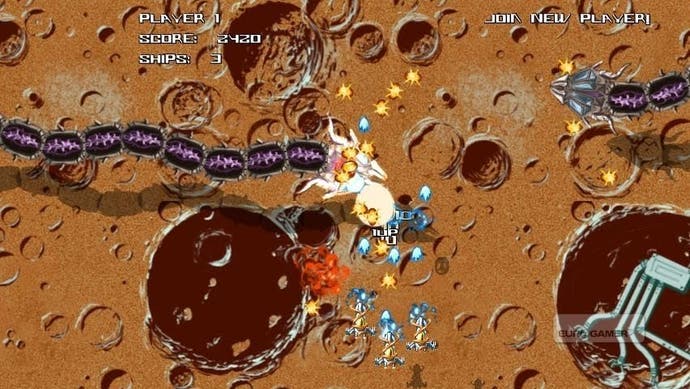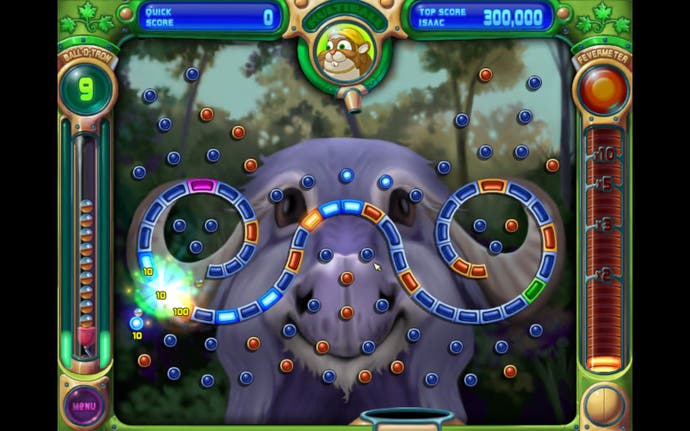Willing and Able?
Is the industry doing enough for disabled gamers?
"We need to accept that not all games can be made accessible to all people," says Special Effect's Mick Donegan. "It's more a case of looking at those games which can potentially be adapted, at the outset if possible, and making them accessible to as many people as possible.
"That's why we're here – not only to provide information and modify games after the event, but also to team up and advise the industry either when a new version of a game is being developed or even when a new game is just a twinkle in the Developers eye."
Not all the necessary changes require much advocacy - the shift to include casual players has had beneficial side effects for the disabled audience as well.
"Recently, we have seen that with gaming becoming increasingly popular, some releases are including features aimed at allowing a wider audience to be able to play them," says Donegan.
"For instance, F1 2010 and Forza 3 both have an auto braking option, which allows many more people, including those in the mainstream audience, to join in. FIFA 11 has included the two-button mode first seen in EA's World Cup South Africa release, which again simplifies the controls to allow many more people to play it."
This has obvious implications in the increasingly popular realm of motion control, a development that has the potential to both include – and exclude – disabled players.
"Motion controllers have added a new dimension to gaming," Steve Spohn admits. "Unfortunately, it's a move away from accessibility for many disabled gamers. Those with motion impairments such as using wheelchairs or limited body movement will be left out a lot of games.

"However, for other gamers that have the ability to move around easily but not dexterity for fine movements, motion games can be a good thing."
The Special Effect team agrees. "If developers could make a game that is playable using a motion controller such as the PlayStation Move and a more standard controller then it will open up their games to a more inclusive and broader audience," says Donegan.
"We have a Specialist Occupational Therapist on the team who has the expertise to advise developers on the kinds of movements that people with different disabilities can make most easily so that as many of them as possible can join in too."
Of course, it's doubtful we'll ever see the day when a quadriplegic can fire up the latest first-person shooter and start fragging their fellow gamers with the same vigour as a non-disabled player, but it's surprising just what can be done where there's a will.
It doesn't come as much of a surprise that you're more likely to find bold accessibility decisions in the world of indie development. Peggle features a colour blind option. Xbox Indie game Shoot1UP was patched after release to offer a one-button control system and adjustable game speed.
And then there are games like In The Pit. One of the first games released on the Xbox Live Indie Games channel, it attracted some attention for its audio-only gameplay. Something of a novelty to a console audience unfamiliar with such things, it was actually just one of a number of titles suitable for blind and sight-impaired gamers that have found their way to market over the years.

Usually sold via mail order or direct over the internet (or just given away as freeware), it's the sort of niche which proves that where the mainstream fails to act, passionate enthusiasts will fill the gap. Indeed, at the time of writing this very feature, Walketh, another audio game, was being promoted on the front page of the Indie Channel.
For indie developer R. Hunter Gough, the creator of In The Pit, the inspiration was more of a technical challenge than anything purely altruistic. Put simply, designing an audio-only game forces you to be a smarter developer.
"I didn't set out with the goal of, 'Let's make a game for the blind!'" he confesses. "But I was aware from the get-go that this would be a game that blind people could play just as well as sighted people, if not better, since they're more accustomed to navigating by sound."
It's unlikely we'll ever see an audio-only blockbuster troubling the charts. But there could easily come a time when the inclusion of an accessibility menu option - allowing gamers to dictate game speed, font size and control layout - is standard industry practice, just like subtitles on a DVD.
The only mystery is why it doesn't happen more already. After all, disabled people spend the same money as everyone else, and games publishers still like money, right?






.png?width=291&height=164&fit=crop&quality=80&format=jpg&auto=webp)

